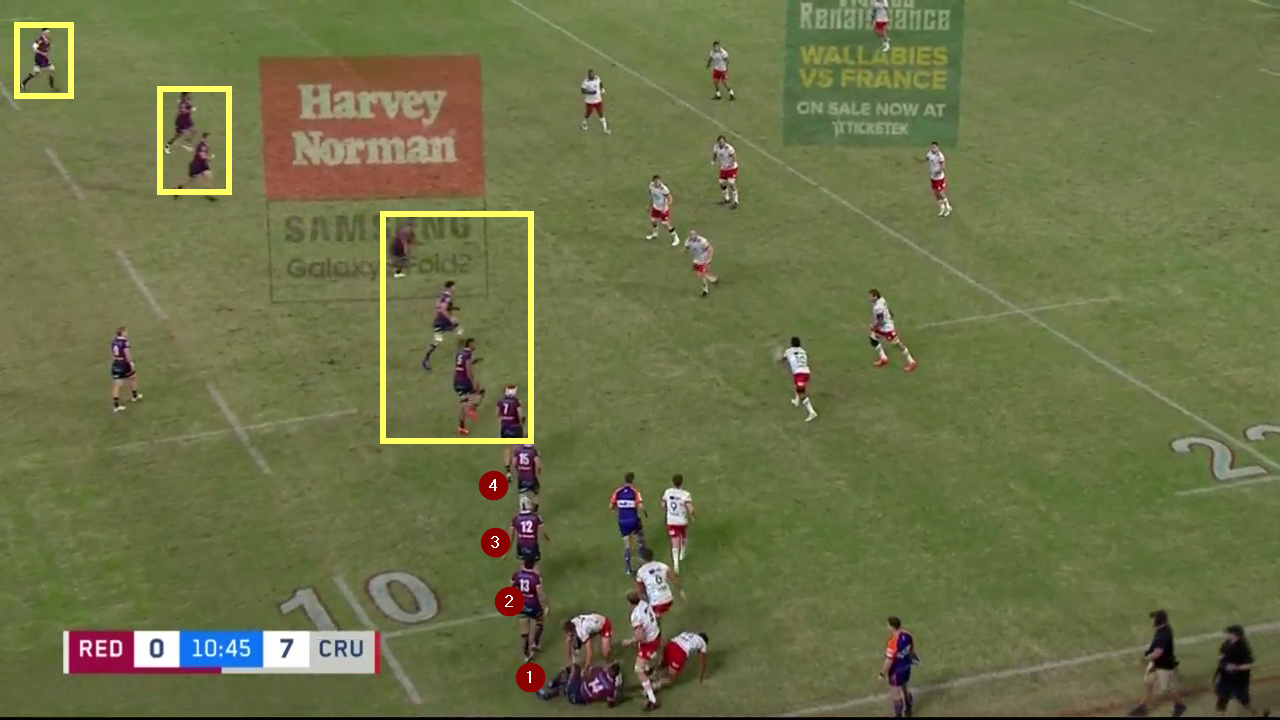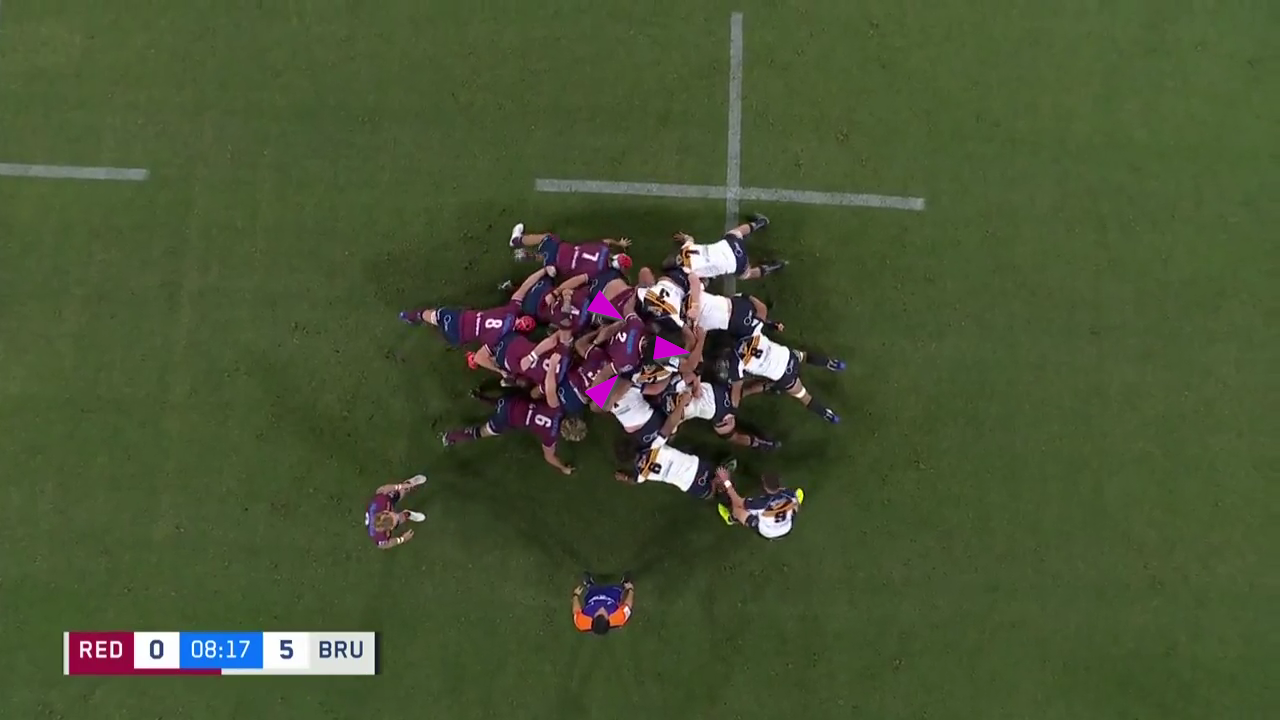Welcome to another edition of Coach’s Corner, where your questions about the latest goings-on in rugby are answered.
I’m not sure that saying the refereeing is inept, perhaps misunderstood is a better term… I think there is a very clear difference between what the referee sees and why he makes certain decisions over what the viewers see through the one-dimensional view on TV. It would be good to see some of these explained
– JC Masher
Most penalties are not for cynical cheating but rather against players who are attempting to do the right thing but make a minor technical error – in the view of the referee.
– In Brief
As a ref for over 25 years, I have to agree the standard of referring is generally poor. In their defence (the professional refs), the Law Book has greatly increased in size… I find it “wordy”, sometimes contradictory, and definitely open to interpretation.
– Adam Smith
I want to get rid of warnings. If players don’t play within the laws they need to be penalised, not warned, and the referee is not a coach either. His role is to apply the laws of the game, it is the players responsibility to know and play within the laws of the game. Sevens got this right, if you do something stupid or cynical you get a yellow card.
– Ex Force Fan
Some of the refereeing decisions in the last round of Trans-Tasman matches were hard for any observer to understand, and generally the referees were far too soft on cynical play.
A New Zealand referee (Mike Fraser) was appointed to the Reds-Crusaders ‘Super Bowl’. The game started with two blatant pieces of obstruction within the first five minutes.
In the second example, Brandon Paenga-Amosa is rightly pinged by Fraser for shouldering Ethan Blackadder off the ball as Harry Wilson runs a kick back.
In the first – a more critical scenario with Will Jordan defending as the last man, close to the Crusaders’ goal-line – the Crusaders’ fullback does not attract a penalty or yellow card for a flagrant barge on Bryce Hegarty as he goes through. In Europe, this incident would definitely have been reviewed by the TMO.
A similar situation recurred later in the first half.
There is another kick-through, with the Crusaders struggling to clean up at the back. In this case, Leicester Fainga’anuku is robbed by Hegarty in the tackle and Fraser does not appear to follow the typical protocol. The usual call of ‘tackler – release!’ is not made when Fainga’anuku’s left knee touches the ground. The tackle is therefore still live, and only completed when Hegarty steals the ball – but it is the Reds’ fullback who is penalised.
Around the half-hour mark, the Reds had a pass deliberately batted down in midfield:
Referees in the UK all know that this kind of action by the tackler only imitates a ‘wrap’ with the arms, but it is really meant to make contact with the ball and interrupt the attack. This would be a penalty and a potential yellow card offence on review. Fraser gave a scrum for the knock-on.
With Nic Berry in charge of the Force-Highlanders match, and the Westerners hot on attack, this happened.
The Highlander in the hat takes a clear swipe at the ball on the floor, and in the UK that is an automatic penalty and yellow card. Berry waved play on. Much tougher sanctions on cynical play are needed, and they need to be consistent between the two hemispheres.
I believe Richie Mo’unga is not only the most complete flyhalf playing worldwide today, but possibly the most complete I have ever seen. Is this a reasonable conclusion to be drawing? I can go back, with clear memory, as far as Barry John of Wales.
– Mzilikazi
Mo’unga is still to be proven at Test level and when on the back foot.
– KiwiHaydn
While looking at basic skills, what is the go with passing left-to-right? If my job was to be a rugby player, I think I’d probably spend a bit of time making sure I could pass both ways with reasonable distance, accuracy and speed.
– Exile in Oz.
It was very noticeable even in the warm up. Mo’unga and Havili were running across the field passes were flat, fast and pinpoint accurate off either hand and they were gradually increasing the distance between them up to 30 odd metres with no noticeable difference in the passing.
O’Connor and Hegarty were doing the same drill however both were noticeably worse passing left to right and as the distance increased the passes became less flat and less fast and the accuracy dropped considerably.
– Hoges
A great deal can be learned by watching teams closely in their warm-up routines, and the story told by ‘Hoges’ is especially revealing. The current narrative about Richie Mo’unga seems to be as follows: “He’s great when he gets front-foot ball and his forwards dominate, but he disappears under pressure or when his side is going backwards.”
Richie Mo’unga will always have a positive influence on the game because his core skills are so good. He does not need to make spectacular breaks or passes to look, or be effective. On defence, the Crusaders aligned with Richie in the 13 channel:
As I pointed out in the article earlier in the week, it is Mo’unga who is in control of this picture defensively, looking Jock Campbell off and persuading him to pass to the man he wants to tackle (Hegarty). Not only that, he doubles down by running the loose ball back for a try!
Now let’s look at the Crusaders’ second score of the game from the viewpoint of left-handed passing. This is the picture after the first ruck from a kick return.

There are a couple of big gaps in the defence – the first on the outside of Taniela Tupou, the second beyond Paenga-Amosa – but to get the ball there quickly the Crusaders will have to make a couple of very accurate long passes off the left hand. The 2-4-2 attacking formation cannot function without that.
Two passes – one from Mitch Drummond at the base, the second by Mo’unga to find Will Jordan, travel fully 25 metres in the air. The path of flight is flat and accurate and both passes reach the target in front of the man. There has to be some doubt whether Tate McDermott and James O’Connor could have achieved the same effect, for all their many virtues.
That enables Jordan to move the ball into the gap outside Paenga-Amosa and set up a ruck where the Reds are stretched to cover the first three inside gaps:
The sequence is finished appropriately enough, by another superb delivery from Mo’unga off his left hand, hitting Sevu Reece in stride on his path to the corner.
Mo’unga’s highlight reel moments occur because they grow out of the ‘earth’ of his excellence at the basic skills. He may not be anywhere near Dan Carter yet for the title of GOAT, but he is creating many moments to cherish:
Why has the Brumbies scrum degenerated so much over the last two seasons?
– CO)))DA
Loss of key second rowers like Rory Arnold.
– Numpty
I just don’t understand how an all-international front row can get bullied around week in, week out. Or how a player like Scott Sio has deteriorated to such a degree.
– CO)))DA
The answer is a combination of factors. It is difficult to quantify the input of the second rows at scrum-time without having access to the kind of statistical information that will be the preserve of the Brumbies’ coaches.
But in the front row, there have been a number of small but significant downswings. The first, and probably the most important of those has been the problem in the very centre of the scrum, at hooker. On every occasion that the Brumbies have played the Reds in 2021, they have been unable to contain the power of Brandon Paenga-Amosa in the gap between their hooker and tighthead prop.


All of the Reds’ efforts are spearing in towards the middle of the tunnel and, in the second example, Folau Fainga’a has been completely split away from his captain, Allan Alaalatoa – to the point where Feao Fotuaika is actually scrumming inside the tighthead, not outside him.
The grand final also showed that Lachlan Lonergan is not yet ready to take over from Fainga’a, in pure scrummaging terms.
There have been some signs of wear and tear in Scott Sio at number one, but the other key issue (for both the Brumbies and the Wallabies) is that Allan Alaalatoa’s best spot is not tighthead prop, but on the other side of the scrum – where he first started his Super Rugby career. His body-shape for tighthead is not as compact between shoulders and hips as the physique of the top operators in the position.
Since the World Cup final in 2003, it could be argued that Australian rugby has been on a downward trend. Where we were once a group of really professional amateurs we have become a group of somewhat amateur professionals. We do not have the player base and talent to compete with five teams against five New Zealand teams.
– RedsFan 101
Australia’s Golden Era… was arguably successful because off their more professional approach to games than everyone else at the time, with fitter players, and a more structured approach to defence and attack. Do you believe the structured approach back then was our downfall, and has it continued to pull us down today?
– Faithful
I had a discussion on the weekend with some of the Aussie guys about how they used to have a very successful national coaching structure, but don’t any more. If you were the Rugby Australia Director of Coaching, how would you go about creating a new structure?
– JD Kiwi
I believe Australia benefits from structure on the playing field, and they have been at their most effective versus New Zealand opponents when the contrasts in playing style are most stark, and they play their own uniquely ‘Australian’ possession game.
You need supreme physical conditioning and clear-headed decision-making to play varied and creative multi-phase rugby, and that is what the best Australian teams of the professional era achieved. Yes, it went too far and became an obsession around 2004-2005, but it is time for it to swing around in a form adjusted to the new era.
Regular readers will know my opinion on five Australian sides competing in the same tournament with the same number from New Zealand. The talent spread is too thin for that format to be successful, unless a big homecoming by the exiled ‘flying geese’ could magically be arranged!
Australian rugby also benefited hugely in the past from the crossover of sporting knowledge that flowed naturally out of the Australian Institute of Sport, with rugby coaches and administrators only one office down the hall from league or AFL. Those links need to be reforged, with knowledge from league and Aussie Rules irrigating a new period of union success.
Thanks once again to all who contributed a question, or to the discussion around a question in the call-out!































































































